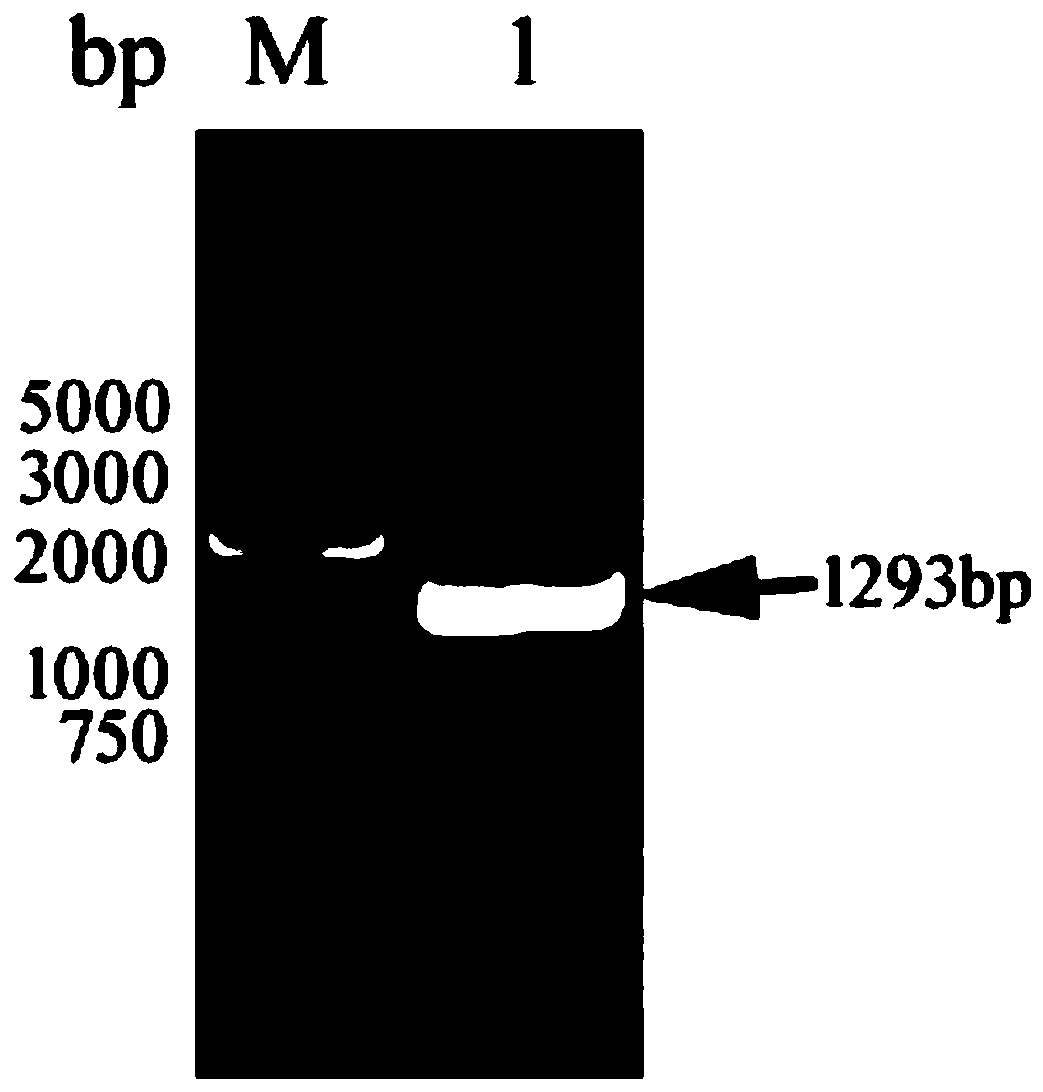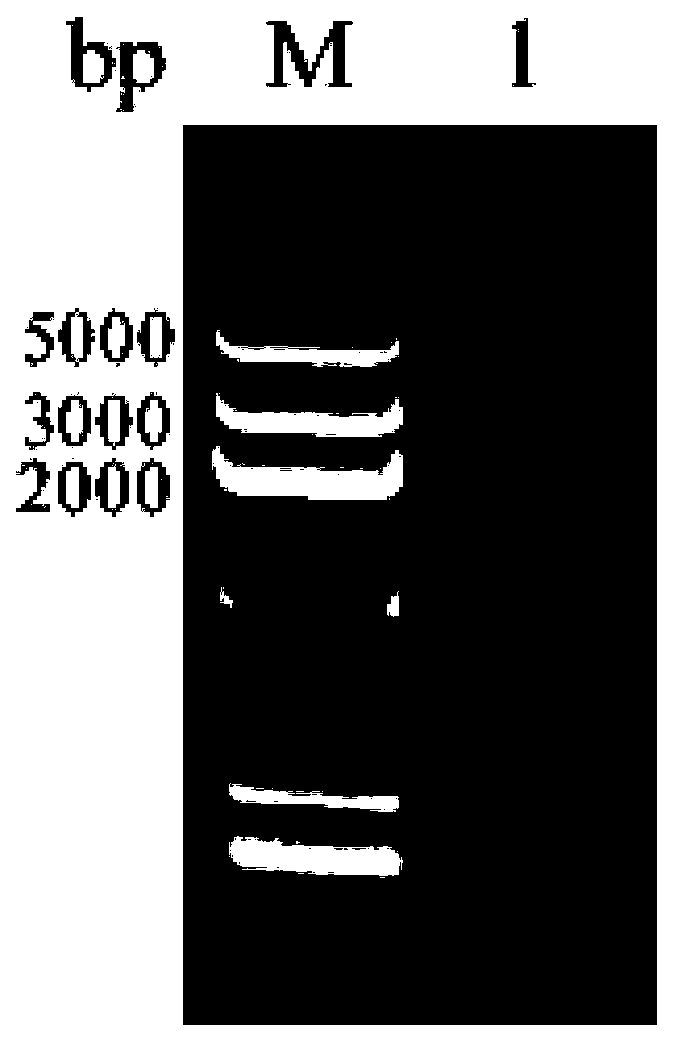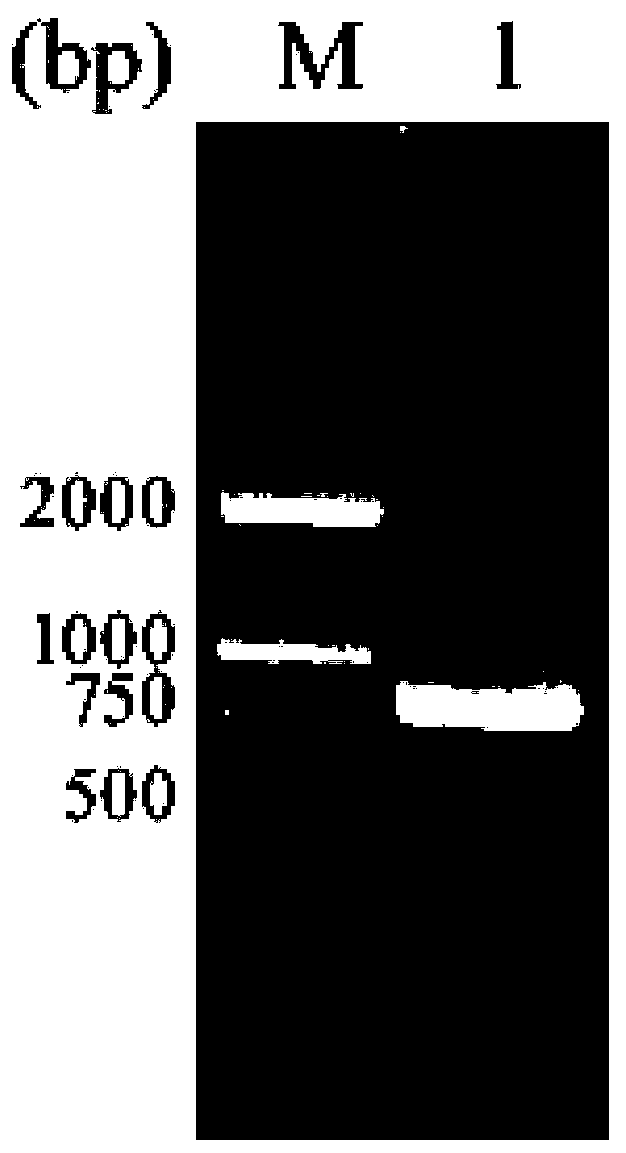Saccharomyces cerevisiae engineering bacterium for producing rapeseed sterol and construction method and application thereof
A technology of Saccharomyces cerevisiae and construction method, which is applied in the field of metabolic engineering, and can solve problems such as high price of brassicasterol and scarce sources of brassicasterol
- Summary
- Abstract
- Description
- Claims
- Application Information
AI Technical Summary
Problems solved by technology
Method used
Image
Examples
Embodiment 1
[0062] Construction of Δ7-Red Yeast Expression Vector
[0063]According to the published sterol Δ7-reductase gene (Δ7-red, ATU49398) sequence, the Δ7-red gene (SEQ ID No.1) was artificially synthesized, and the plasmids containing the Δ7-red gene were named pGSI-Δ7-Red2. Primers Fhis49398(SEQ ID No.5) / Rhis49398(SEQ ID No.6) were designed, pGSI-Δ7-Red2 was used as template, KOD PlusTaq was used as polymerase, and PCR was carried out according to the following procedure: 94°C 2min; 94°C 20sec, 55°C 30sec at ℃, 1min at 72℃, 30 cycles; 7min at 72℃; store at 4℃. After the reaction, take 10 μl for electrophoresis, the result is as follows figure 1 shown. It can be seen from the results that a band with a size of 1293bp appeared on the swimming lane, which was consistent with the expected size, indicating that the Δ7-red gene had been amplified successfully.
[0064] The pESC-Trp (50 ng / μl) plasmid was digested with EcoRI and SpeI (Baoric Medical Biotechnology (Beijing) Co., Ltd.)...
Embodiment 2
[0071] Construction of Yeast Expression Vector Containing GDH Gene
[0072] According to the published glucose dehydrogenase sequence (glucose dehydrogenase, GDH, M12276.1), the GDH gene (SEQ ID No.3) was artificially synthesized to obtain the plasmid pGSI-GDH containing the GDH gene. Design primers FBamH12276 (SEQ ID No.7) and RSal12276 (SEQ ID No.8), use pGSI-GDH as template, KOD Plus Taq as polymerase, and perform PCR according to the following procedure: 94°C for 2min; 94°C for 20sec, 60°C 30sec, 30sec at 72°C, 30 cycles; 7min at 72°C; store at 4°C. After the reaction, take 10 μl for electrophoresis, the result is as follows image 3 shown. A specific band with a size of about 750bp appeared on the swimming lane, which was consistent with the theoretical size of GDH, indicating that the GDH gene was successfully cloned.
[0073] The pESCTrp-Δ7Red2 (40ng / μl) recombinant plasmid was digested with BamHI and SalI (Baoric Medical Biotechnology (Beijing) Co., Ltd.) according ...
Embodiment 3
[0079] Construction of Yeast Engineering Strain Containing Δ7-red Gene and GDH Gene
[0080] Extract pESCTrp-Δ7Red2-GDH plasmid. The above plasmid was introduced into Saccharomyces cerevisiae W303-1B by LiAc-mediated method, and cultured upside down at 28°C for 2-3 days, and the engineered bacteria grew clones. Eight clones were picked for plasmid extraction. Using the extracted plasmid as a template and Fhis49398 / Rhis49398( as primers, perform PCR according to the following procedures and systems: 94°C for 2min; 94°C for 20sec, 55°C for 30sec, 72°C for 1min, 30 cycles; 72°C for 7min; 4°C for storage. After the reaction, take 10 μl for electrophoresis. It can be seen from the results that clones 1, 2, 4, 5, and 6 have bands with a size of 1.3 kb, which is consistent with the expected size, indicating that the Δ7-red gene has been introduced into Saccharomyces cerevisiae ( Figure 5 ). Then, using FBamH12276 and RSal12276 as primers and the extracted yeast plasmid as a temp...
PUM
 Login to View More
Login to View More Abstract
Description
Claims
Application Information
 Login to View More
Login to View More - R&D
- Intellectual Property
- Life Sciences
- Materials
- Tech Scout
- Unparalleled Data Quality
- Higher Quality Content
- 60% Fewer Hallucinations
Browse by: Latest US Patents, China's latest patents, Technical Efficacy Thesaurus, Application Domain, Technology Topic, Popular Technical Reports.
© 2025 PatSnap. All rights reserved.Legal|Privacy policy|Modern Slavery Act Transparency Statement|Sitemap|About US| Contact US: help@patsnap.com



